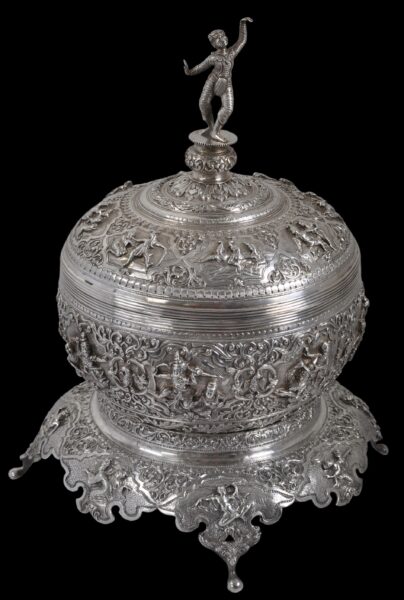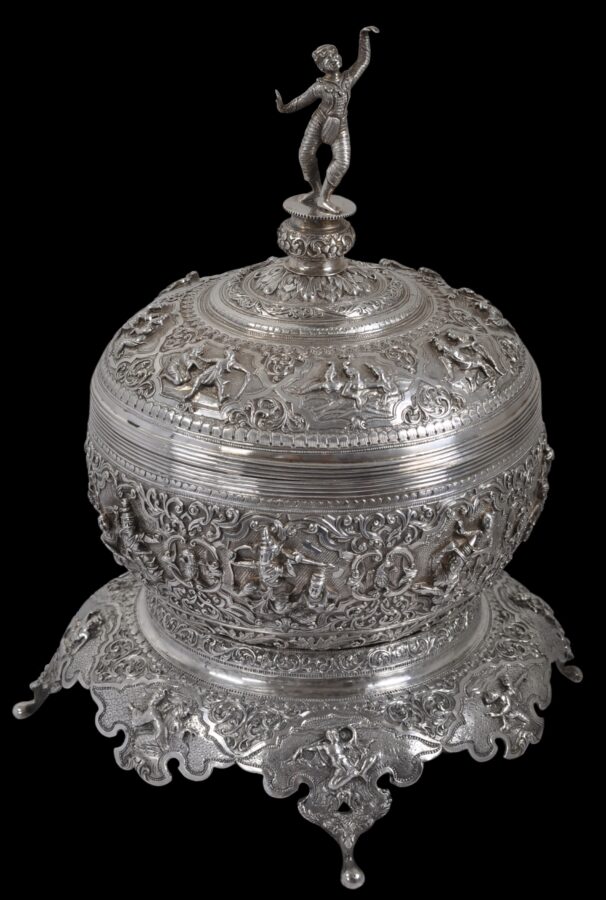This fine solid-silver table centrepiece was made by Burmese craftsmen for a colonial dining or side table and dates to around 1905. It comprises a stand which sits on four feet, a bowl, and a domed cover or lid surmounted by a solid-cast silver figure of a dancing ogre from Burmese folklore.
The base of the stand is engraved finely with ‘A.L. Clapham Esq From P.M. Madooray Pillay R.B.’ Rangoon had a significant local Indian population during the colonial era. Many were involved in the professions and in business, and both Madooray and Pillay were common Indian surnames at the time.
The stand has eight cartouches repoussed with scenes of figures in Burmese dress, probably all drawn from the Burmese version of the Ramayana (known in Burmese as the Yama Zatdaw), all amid leafy scrollwork.
The bowl similarly is repoussed with eight scenes, each separated by a peacock motif and with more interlocking scrollwork.
The cover also is decorated with eight cartouches of Burmese figures, again, most probably drawn from the Ramayana.
The cover has several low tiers which rise to an acanthus leaf roundel from which the chased, baluster-form platform rises to support the ogre figure. The ogre figure is attached to the cover by means of a nut and bolt. This is essential – more recent examples will have this element soldered on.
A large example of such a centrepiece is in London’s Victoria & Albert Museum. The V&A piece is illustrated in Lowry (1974) and is attributed to ‘probably the late 19th century.’ As Lowry says, ‘Although much of the market for these pieces was among the European community, and therefore, there was an understandable tendency for craftsmen to produce Europeanized design, many traditional shapes and decoration were kept.’ The bowl which forms the main element of the centrepiece is based on the Burmese monk’s begging bowl, for example.
The piece is stable and sits evenly. It is a fine example of Burmese silversmithing produced during the colonial era.
References
Dehejia, V., Delight in Design: Indian Silver for the Raj, Mapin, 2008.
Green, A., Burmese Silver from the Colonial Period, Ad Illisvm, 2022.
Owens, D.C., Burmese Silver Art: Masterpieces Illuminating Buddhist, Hindu and Mythological Stories of Purpose and Wisdom, Marshall Cavendish Editions, 2020.
Wilkinson, W.R.T., Indian Silver 1858-1947, 1999.








